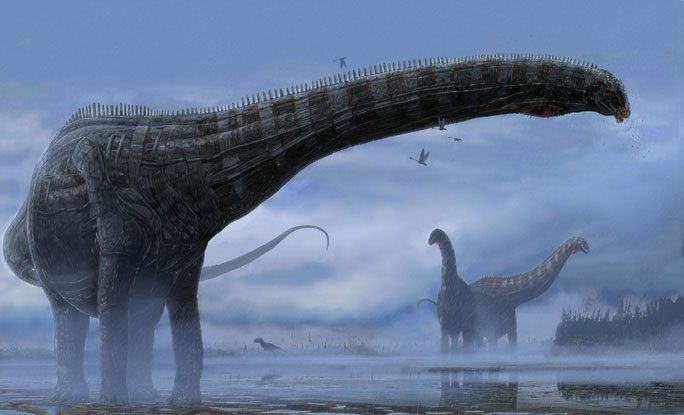A recent study published in Scientific Reports has revealed surprising details about the fossil of a sauropod dinosaur, also known as the long-necked dinosaur, which is the largest dinosaur in the world.
The specimen, nicknamed Dolly, was discovered in southwestern Montana, USA, and dates back to the late Jurassic period, approximately 150 million years ago.

Dolly when alive – (Graphic image by Corbin Rainbolt)
Analysis by Dr. Cary Woodruff from the Great Plains Dinosaur Museum in Malta on three cervical vertebrae of Dolly revealed unusual protrusions in the bone, which appeared to be infiltrated by air-filled sacs.
According to PHYS, the unfortunate dinosaur suffered from respiratory inflammation before its death. The flu, of course untreated, did not resolve on its own and led to severe complications, causing bone deformities and resulting in the dinosaur experiencing continuous fever, coughing, and difficulty breathing… much like a human suffering from a severe respiratory infection or pneumonia.
Researchers believe that it was infected with a fungus similar to aspergillosis, a common respiratory disease in birds and reptiles today. This disease can be fatal to birds if not treated promptly by a veterinarian.
It seems that this unfortunate dinosaur experienced similar issues, as suggested by the complications it faced, which could have been severe enough to cause its death. Understanding the types of diseases these primitive creatures suffered from can provide significant insights into the evolutionary map of various species.
The study also involved collaboration with the University of New Mexico, the Western University of Health Sciences, and the Ohio State University College of Medicine.





















































